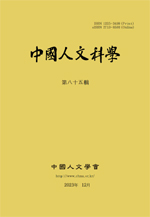증거성 표지의 범주는 최근 몇 년간 한국어 및 중국어 학계에서 많이 논의된 화제 중의 하나이다. 본고는 한국어와 중국어 전형적인 증거성 표지의 ‘-대’와 ‘据说’을 연구대상으로 하여, 두 표현들의 증거성 표지로 쓰이는 정보 출처와 인칭 효과, 의사소통 과정에서의 입장 변화와 상호작용, 화용기능과 이 세 가지 주요 차원을 분석하도록 한다. 첫째, 인칭 효과를 보면, 한중 증거성 표지 ‘-대’와 ‘据说’은 모두 제3인칭 표현과 공기하는 것을 허용하고, 반대로 1, 2인칭과 공기하는 표현들을 허용하지 않지만, 두 표현들은 2인칭과 공기하는 경우에 엄격 정도가 다르고, 중국어 ‘据说’은 2인칭에 대한 제한이 비교적 느슨하다. 둘째, 입장 변화와 상호작용을 보면 둘 다 정보의 출처를 밝히고 정보를 ‘포장(package)’하는 역할을 작용하지만, 구체적인 맥락에서 두 표현들의 입장 상호작용은 다소 다르며, 한국어 ‘-대’는 의문 특징이 있는 종결어미로 고착되어 상호작용 특징이 비교적 강하며, 중국어 ‘据说’은 정보의 전달을 강조하며 반드시 청자의 어떤 응답을 구하는 것은 아니며 그의 상호작용 특징은 ‘-대’보다 비교적 약하다. 셋째, 화용기능을 보면, 두 표현들은 텍스트의 연결, 입장평가, 책임면제(责任免除) 등 차원에서 역할을 작용할 수 있고 다른 면도 가지고 있다. 한중 증거성 표지 ‘-대’와 ‘据说’의 대조를 통해 외국어 학습자들에게 도움이 될 수 있을 것이다.
The evidentiality category is one of the hot topics discussed in Korean and Chinese academic circles in recent years. This paper focuses on the typical reported markers ‘-dae’ and ‘jùshuō’ in Korean and Chinese, and makes a comparative analysis of the personal effects, position transformation and interaction in the communicative process, as well as the pragmatic effectiveness of these two expressions. The preliminary conclusions are as follows: Firstly, from the perspective of personal effect, both the Korean and Chinese evidential markers ‘-dae’ and ‘jùshuō’ allow co-occurrence with the third person expression, and on the contrary, exclude co-occurrence with the first and second person expression. However, the strictness of co-occurrence with the second person is different, and Chinese ‘jùshuō’ has relatively loose restrictions on the second person expression. Secondly, from the perspective of position transformation and interaction, both play the role of revealing the source of information and ‘packaging’ the information. However, there are some differences in the position interaction between the two in specific contexts. Korean ‘-dae’ is solidized into a final ending with questioning attribute and strong interactive communication attribute, while Chinese ‘jùshuō’ emphasizes the transmission of information without necessarily requiring the listener's response. Its communicative attribute is weaker than ‘-dae’. Thirdly, from the perspective of pragmatic efficacy, both of them can play a role in cohesion coherence, position evaluation, responsibility exemption, etc. Korean ‘-dae’ focuses on the pragmatic function of ending and wrapping sentences, but tends to be negative position evaluation, and is weaker in responsibility exemption than Chinese ‘jùshuō’, which focuses on introducing new information and connecting old and new information. Its position evaluation is more neutral, and the characteristics of liability exemption are more prominent.
Ⅰ. 绪论
Ⅱ. 前人研究
Ⅲ. 韩汉语传信标记“-대”与“据说”的对比分析
Ⅳ. 结语
(0)
(0)
